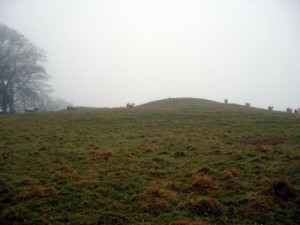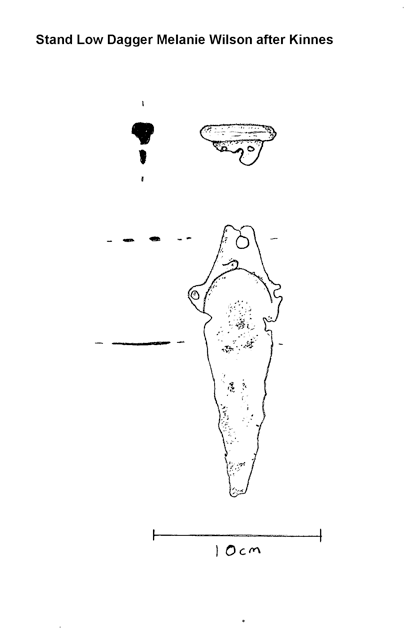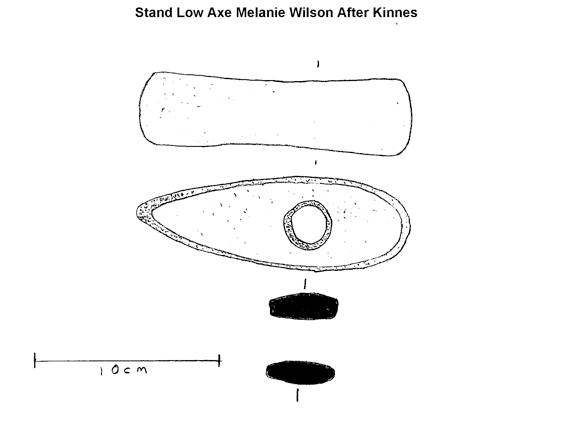Standlow Barrows
The two barrows are found on a limestone ridge outcrop 270 metres at SK21335085 and 21325086 and are scheduled Ancient Monuments Number 13338. They are in Standlow Nobbs field on Newhouse Farm, Kniveton, Derbyshire.

The largest mound to the North West is 16m by 13.5 m by 1-1.2m high. There is a smaller mound 20m to the South East which is 10.5m x 9.5m x 1m, this is generally believed to be natural.
Archaeological History
There is some confusion in the literature surrounding the sites known as Standlow barrows. In total there appear to be three sites in Derbyshire, one here at New House Organic Farm. One at Standlow East of Dovedale SK15915358, which was partially excavated in 1845 by T Batemanthe, and artefacts were recovered. And the last being at Stanlow SK16917923 near Little Hucklow.
On 10th September 1869 J F Lucas excavated a Stand Low barrow. This excavation recovered several artefacts including a three rivetted bronze dagger with ivory pommel, an urn or food vessel, a perforated stone axe and an amber ring. These dated the Lucas barrow quite firmly.
Unfortunately no exact position was recorded. However, a letter between S Carrington and T N Brushfield dated 3rd January 1870 and uncovered by Barry Marsden in 1977 is said to evidence these finds to the Stand Low at Kniveton.
In addition it is recorded that J F Lucas excavated Wigber Low some 1000m away from Stand Low in 1869. Lucas lived at Fenny Bentley a village less than three miles from Kniveton.
The British Museum also confirmed that the remaining artefacts were listed as Standlow (Kniveton) in their records.
John Barnett visited the site in 1988 and is confident that only the larger barrow is the most likely source and considered the smaller mound to be natural. Martin Wildgoose is also in agreement that the larger is formed and the smaller natural. Wildgoose had previously noted dark crop marks on the large mound in dry weather, which he considered may represent the nineteenth century excavations or later c8th century Anglian burial reuse.
In 1996 Boldrini conducted a detailed measurement survey of the site. He noted greater topographical disturbance in the South Eastern mound. But Robinson (2001) believes that there was an error in orientation of 180 degrees and believes with the error corrected the survey correlates the beliefs of Barnett and Wildgoose.
The Landscape
The foundation material of both mounds are naturally occurring knolls.
The views from the hills are generally good, particularly to the South, West, North and Northeast. With the views to the East being somewhat restricted.
There are many prominent archaeological sites visible on neighbouring hill tops and sides. Including Minninglow, Hawkslow, Mootlow and Liffs Low.
Wigber Low approximately 1100 northwest , falls slightly below the horizon.

The Artifacts
The Artifacts were acquired in 1873 by the British Museum from the J F Lucas Collection following the death of Lucas in 1872 at the age of 35. Presumably, his findings were not published due to his death.
These included a bronze dagger, a perforated Axe, a pottery vessel described as a food vessel or urn, and an amber ring. It was believed that all the finds were lost during the war due to damage at the museum, but the dagger and axe were re-discovered during re-organisation.
The original British Museum record marks the dagger find as: “Bronze dagger with one rivet remaining, and a bone end of handle found in a barrow at Standlow, Co Derby, with axe hammer.”

